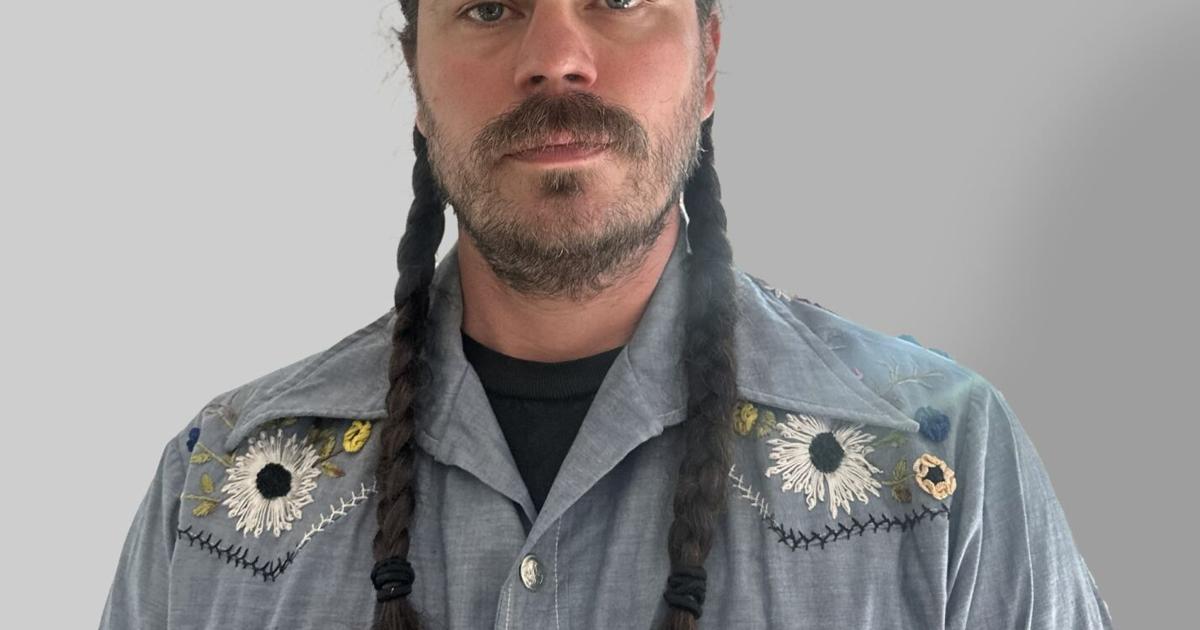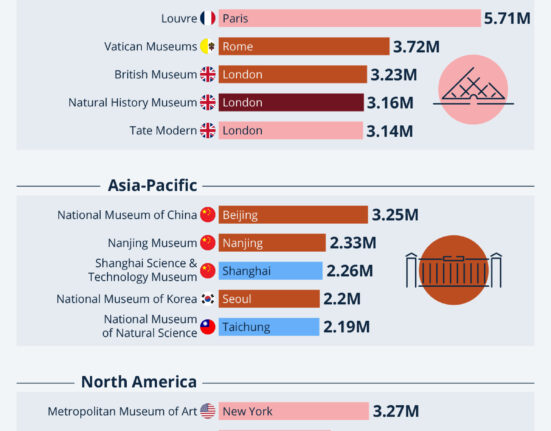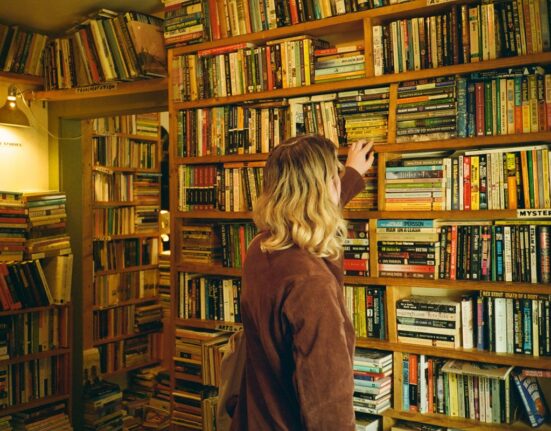Artist Jimmy Dean Horn’s eclectic and complicated works of art are attracting international attention and he plans to make his first-ever appearance at the Southeastern Art Show and Market (SEASAM) this year.
SEASAM is the Chickasaw Nation’s preeminent art show of Southeastern First American artists conducted annually in conjunction with the Chickasaw Annual Meeting and Festival, set this year Sept. 29 through Oct. 7.
Horn’s work – titled “The One That Sits Above” – is also on display at the International Printmaking Biennial Douro, held in Douro, Portugal.
The show began Aug. 10 and ends Oct. 31.
“It is exciting to add another country on the list of where my prints are shown,” he said. “They invited me to submit my art which was a treat, plus the venue explains the evolution of printmaking which appeals to me,” Horn said from his studio “Hallito” in Los Angeles.
It marks Horn’s first international exhibition, and he is consulting with other European galleries to show works in the future.
“I am visiting with officials at the Otto Mueller Museum, and I am thrilled at the invitation to participate,” he said. “The exhibition probably will be in spring 2024, which is nice since I am really busy right now with other projects.”
Mueller and Horn are kindred spirits separated by a century of making similar types of etching, engravings and printmaking.
The museum is located almost dead center in Germany. Schmalkalden, Germany, was formerly part of Eastern Germany post World War II but with the end of the Cold War in 1989, artists flocked to the community first established in 1874.
Mueller was born in 1874 and worked in differing art media but was trained in lithography and produced art from wood carving and ink, much like Horn uses Plexiglas, specialized texturing techniques and ink to “press” his work onto paper.
Art for Free
Horn, a Chickasaw citizen, recently embraced his First American heritage and is expanding on it. He was honored for his work at 2022 Southwestern Association for Indian Arts (SWAIA), which opened the door to numerous opportunities.
He recently participated in the 101st Santa Fe Indian Market, which took place Aug. 16-20 this year.
Last year, Horn finished with honors for what he terms “block prints” and nontraditional “intaglio,” an Italian word meaning “incised or engraved.”
“I etch the art into Plexiglas and then I’ll rub ink into the etchings. I’ll wipe down the plate and the ink will stay in those grooves and then I’m able to pull a print from that etching,” Horn said.
Horn’s generosity at SWAIA 2022 unfurled a welcome mat after a chance encounter with “Cactus Eddie.”
Admiring Horn’s beautifully engraved cactus against a fiery orange sunset, “Cactus Eddie” explained his love of cactus in art, hence his nickname came to pass.
“So, I picked up the piece and said ‘Here, it’s yours.’ He protested a little but accepted the gift. About 30 minutes later, he returned to my booth and formally introduced himself,” the Chickasaw artist recalled.
Eddie Vargas is the curator of the Lloyd Kiva New Gallery in Santa Fe. The gallery celebrates the life and accomplishments of First American fashion designer Lloyd Henri Kiva New, a Cherokee artist and teacher, who helped develop SWAIA into the most prestigious First American art show globally.
This spring, Horn’s exhibition at the gallery included 30 pieces and was well received by patrons and art lovers alike. Horn’s unusual artwork is on display in Los Angeles, Echo Park, California, Exhibit C in Oklahoma City, and many other locales.
“I was accompanied by a friend to last year’s SWAIA market and he playfully teased me about giving away my art,” Horn recalled with a chuckle. “It turns out that giving art away brings new opportunities, just like with ‘Cactus Eddie,’” he laughed, “you never know what door it will open.”
A New Frontier
It can safely be proclaimed Horn has never met a stranger. “It is an immense pleasure to explore other artists’ creativity and get to know them on a personal level,” he explained.
“Getting to know” other artists propelled Horn into an unusual new art experience – fashion.
“I have been working with two individuals at the Chimayo Jackets Design Studio in Santa Fe. The jackets are handmade from start to finish. I printed on the fabrics by hand, and my friend, Stewart, takes the tapestries to cut and sew them into jackets. Cyrus James Goodheart, a Silversmith, who resides in Colorado, topped the pieces off with handmade buttons and broaches,” Horn said.
Chimayo fashions have been a part of First American heritage for more than 400 years. Weavers would produce blankets, jackets, vests, bedding and many staple items for trade or for purchase.
That industry almost tanked due to European competition. Canadian companies traded furs and blankets to First Americans in the 1700s and French fur and trinket traders roamed freely in the Rocky Mountains from New Mexico into Canada.
Chimayo lived on and remains a favorite garment among First Americans and is also enjoying a renaissance with non-Native fashionistas.
“Transferring my art to a garment was challenging to say the least,” Horn said of his new venture. “I worked with all kinds of fabrics to make sure the art would soak deep into the fabric like screen printing. I worked with incredibly soft fabrics to canvas duck cotton that was honestly too stiff for my liking,” he said.
Horn’s Hallito Studio website – Hallito.com – shows Chimayo fashion jackets replete with Horn’s First American designs, symbols, artistry and more. The website takes you on a complete tour of all Horn has accomplished and the art style that is garnering attention abroad.
So unique are Horn’s creations, he even observed “I got a lot of side-eye at SWAIA last year. It’s not traditional art by any means. I’m quite sure many art lovers didn’t know what to make of me or of the art. There is traditional First American symbolism in my work. Printmaking is a rare art form to arrive at SWAIA. I didn’t know what to expect so I arrived in Santa Fe with about 500 pieces of work and displayed them like you’d see in a record shop,” Horn said with a laugh.
The art is all hand-etched. Horn does not use computer graphics for assistance. “Just about anything you can carve into, you can use for this art,” he said, adding with amusement he has once used a traffic cone.
His art featuring iconic Chickasaw entertainer Te Ata won second place in the 2D Division last year at SWAIA. Horn went against artists exhibiting photos, paintings, drawings and graphics. “It is a challenging category. I was thrilled to win another ribbon for two pieces of art in addition to the Te Ata work,” Horn said.
The Te Ata-inspired print plate measures 5.5-by-7.5 inches. “Working with scrap/or/recycled Plexiglas is difficult to present in traditional measurements,” Horn explained. “I work with all different shapes and sizes.”
Horn, 35, is of Chickasaw heritage through his father.






